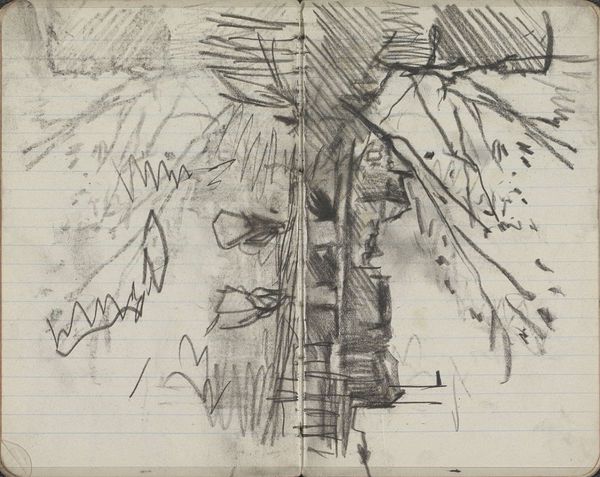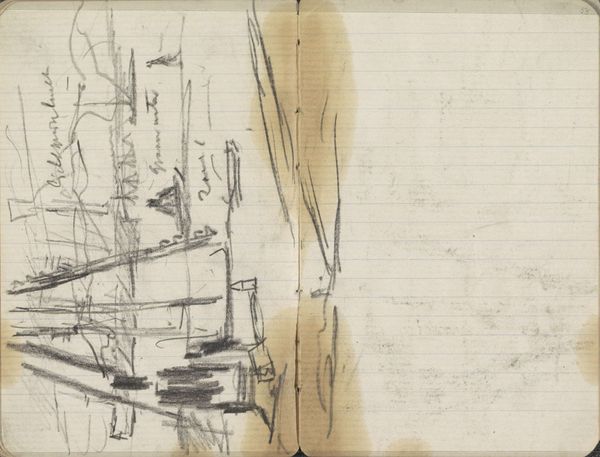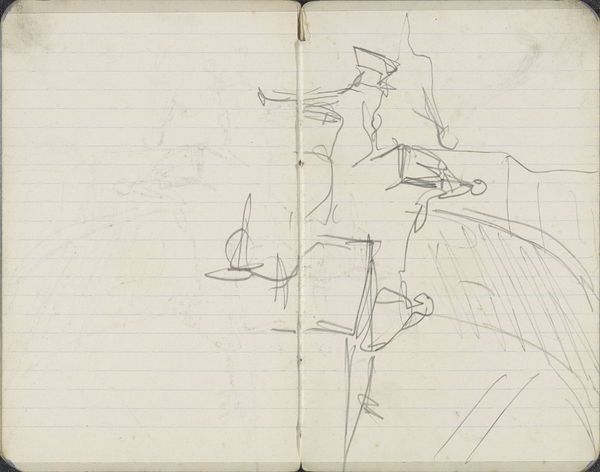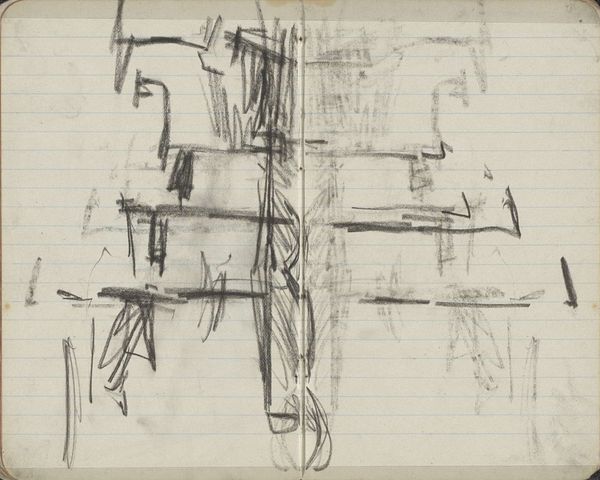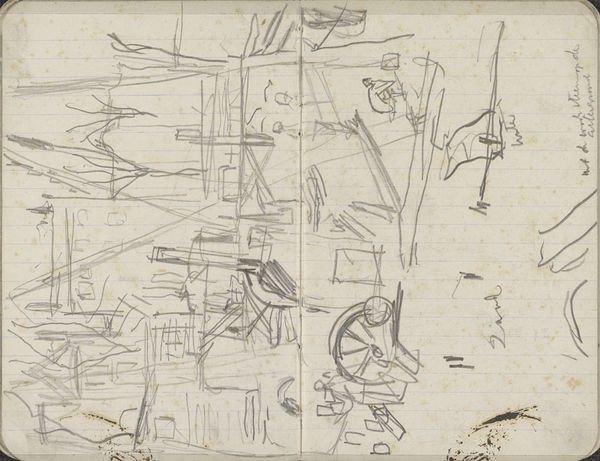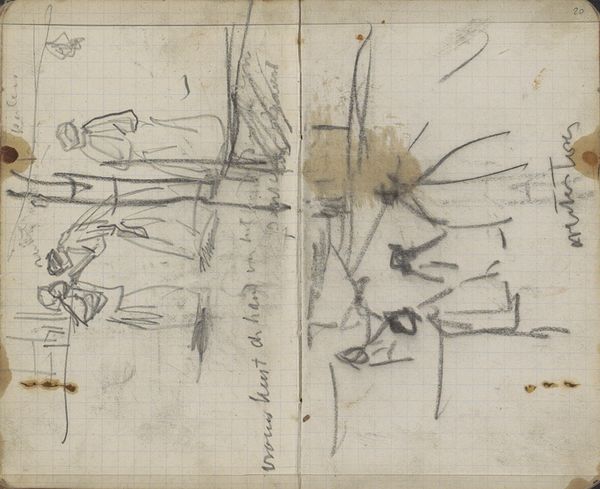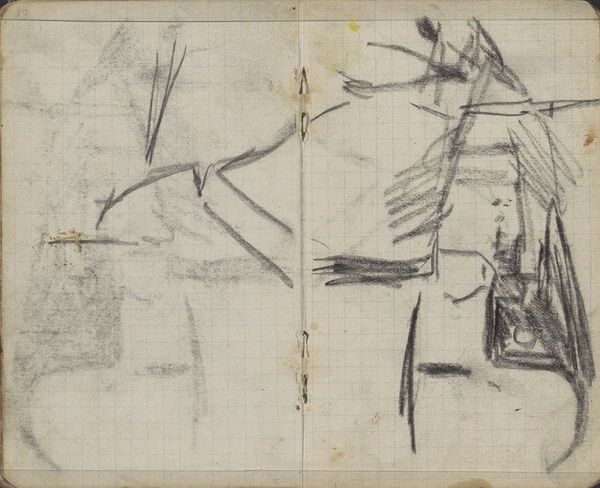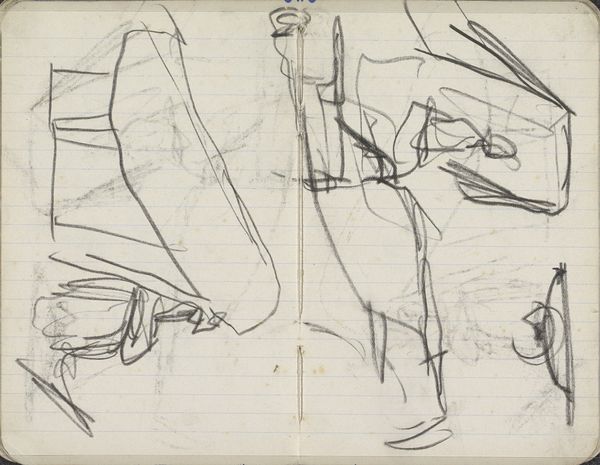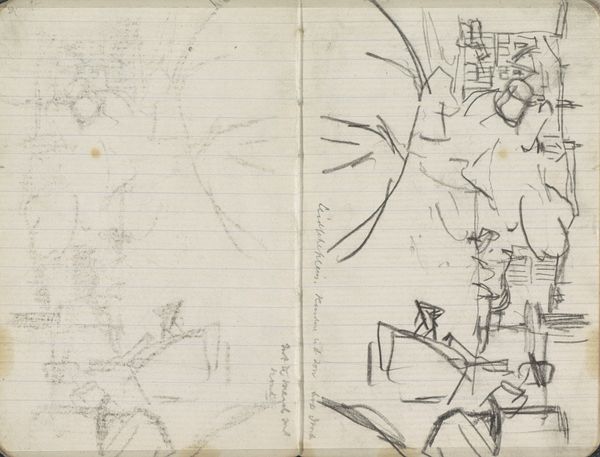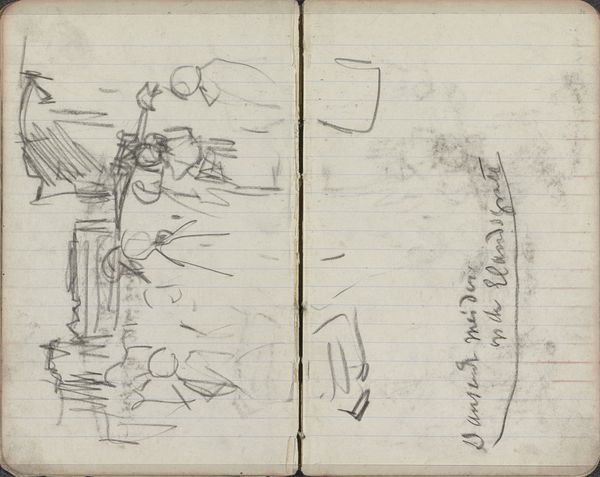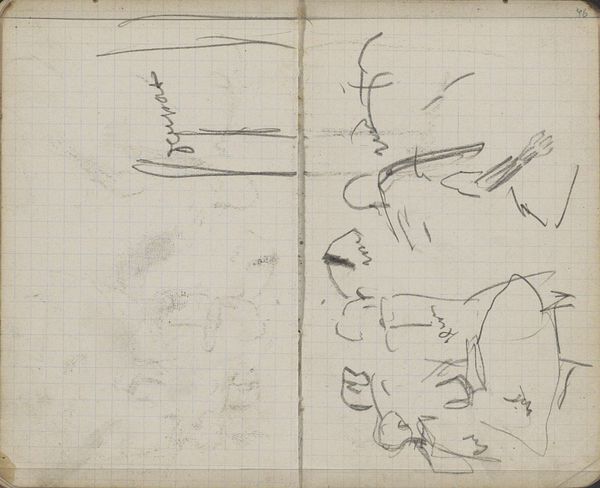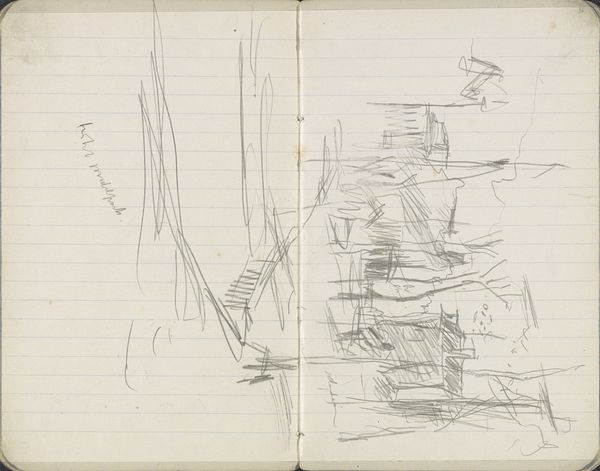
Copyright: Rijks Museum: Open Domain
Curator: Looking at this pencil drawing from around 1898-1902 by George Hendrik Breitner, "Gezicht op de Westerkerk in Amsterdam", I immediately feel a sense of urgency and spontaneity, almost as if the artist was trying to capture a fleeting moment in time. What is your initial impression? Editor: The first thing I notice is the clear contrast between the built form and the medium itself. I think the lined paper of this sketchbook drawing lays bare the physical support on which the scene emerges—quite literally revealing the conditions for art making itself. Curator: Absolutely! It feels so raw and unfiltered. The loose lines really bring the subject to life. You can almost imagine the bustle of the city around the church, can't you? I am amazed by his efficient strokes! It's as if he condensed a grand vista into just a few, masterful flicks of the wrist. Editor: Right, but I wonder, does the choice of such accessible materials affect our perception? Pencil on paper brings with it associations with study, rehearsal, or even the everyday practice of note-taking. How do these "humble" materials inform how we appreciate what may have been conceived of as a monumental subject, given his vantage point on Amsterdam? Curator: It humanizes it, in my opinion! He’s making the Westerkerk his own; not just a religious site, but a monument observed by him, drawn in the medium that allowed for personal, reflective interaction with a space, if that makes sense? Editor: Sure! The materiality speaks to that immediacy, absolutely. This drawing seems to question, what is lost and what is gained in that kind of exchange? The paper looks almost ephemeral. It encourages us to confront how we look at both history and something as ever-present as the Westerkerk, while suggesting their potential to fade away or transform. Curator: Breitner manages to turn an apparently basic sketch into an impression so personal and potent! Seeing this piece really emphasizes the impact of perspective in art and in our memory of spaces that form part of our identity. Editor: Yes, Breitner turns the drawing into an introspective study, prompting us to consider the physical processes behind representations and cultural monuments in art and society at large.
Comments
No comments
Be the first to comment and join the conversation on the ultimate creative platform.
